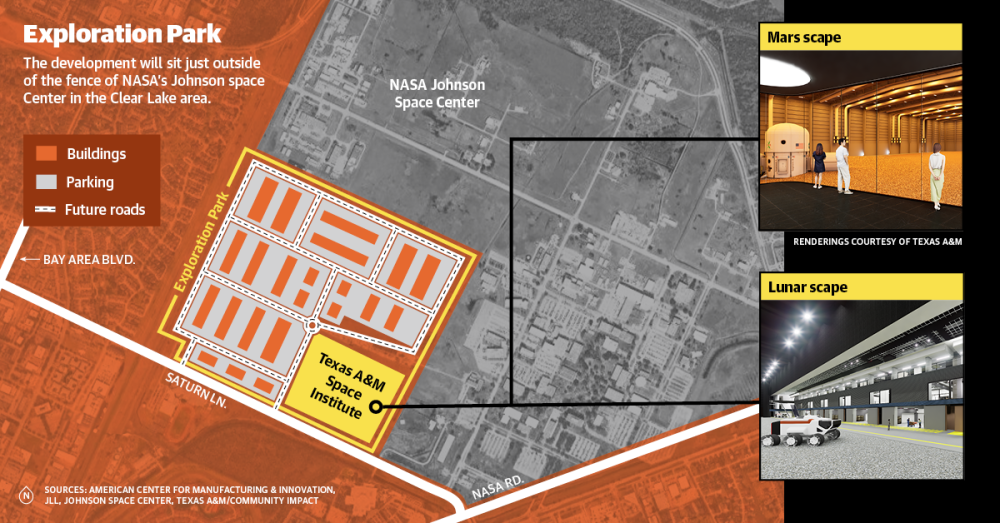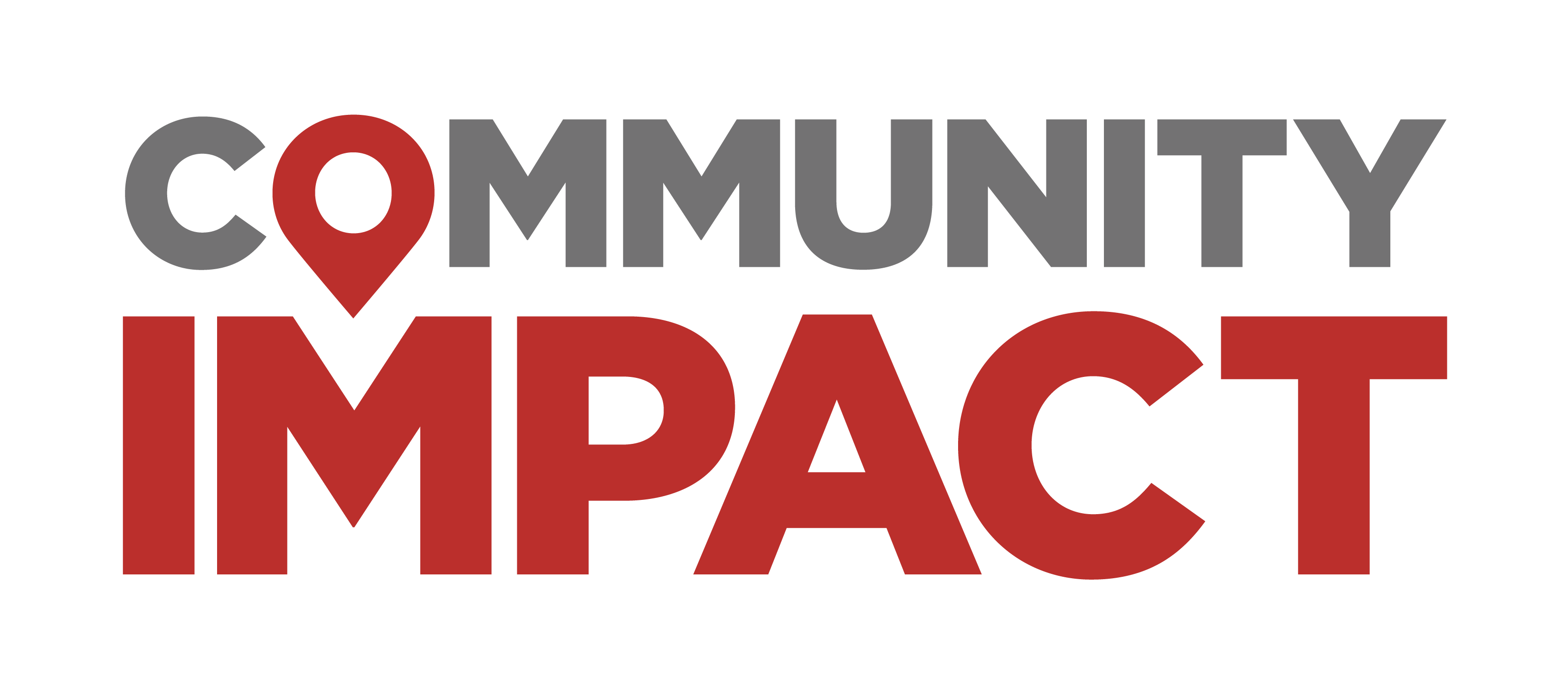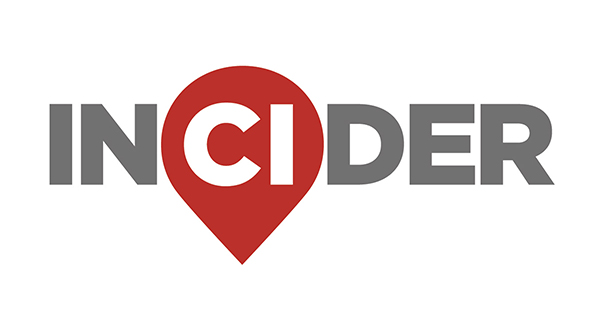The overview
Its cornerstone project, the $200 million Texas A&M Space Institute, began construction in February, officials from the college confirmed in March. The project will feature the country’s largest lunar and Mars scapes.
The rest of the park, which could begin construction in the second quarter of 2025, will consist of nearly two dozen buildings totaling more than 1 million square feet of space. NASA officials have said they hope to see a mixture of private, public and academic partnerships geared toward manufacturing, research and testing, among other focuses, in the pursuit of human space flight.
The American Center for Manufacturing & Innovation, or ACMI, is helping build out the site, and Chicago-based real estate company JLL is leading the leasing effort, Community Impact previously reported.

Zooming in
Exploration Park has long been billed as a center that will feature manufacturing, research and testing in a variety of areas related to human spaceflight, project officials said.
From equipment and medical supplies, to testing on a true-to-life Mars scape, research and development at Exploration Park will be wide ranging, both private and public officials said.
Steve Koerner, acting director for Johnson Space Center, said he expects the area to “become a hub” for space-related development.
However, throughout recent years, state, academic and business officials have said the goal of the site is to use the future developments at Exploration Park to help make life better for humans on earth.
New power sources, manufacturing processes, food and cleaner environments can all be obtained through developing space technology, according to NASA’s website.
“This is not just about creating technologies and equipment for the few people like me that have the extreme privilege of leaving the earth," said Nancy Currie-Gregg, director of the new TAMU Space Institute. "This is about what we can do in space to enable and better the life of all Texans.”
Some key attributes of the new park include:
- 240+ acres of space
- $200M in state funding to build the TAMU Space Institute
- 1.5M projected in square feet of space across all buildings
- 22 buildings ranging from 15K-500K square feet in size
Work on the space institute and other buildings at Exploration Park should wrap up in late 2026, project officials said.
Meanwhile, finding tenants will happen in tandem with build-out, JLL officials said. Many of the buildings will be built-to-suit, meaning some tenants will likely enter the picture early in development. Officials did not confirm any specific tenants as of press time.
JLL officials said they are taking a “global approach” to filling the space and could include businesses and entities that specialize in robotics, aerospace engineering, critical defense, manufacturing and research, among others.
"The park will soon be home to facilities driving spaceflight innovation for both Texas and the nation,” Koerner said. “I’m excited to see the developments that arise from Exploration Park and to support the next generation of spaceflight professionals.”





